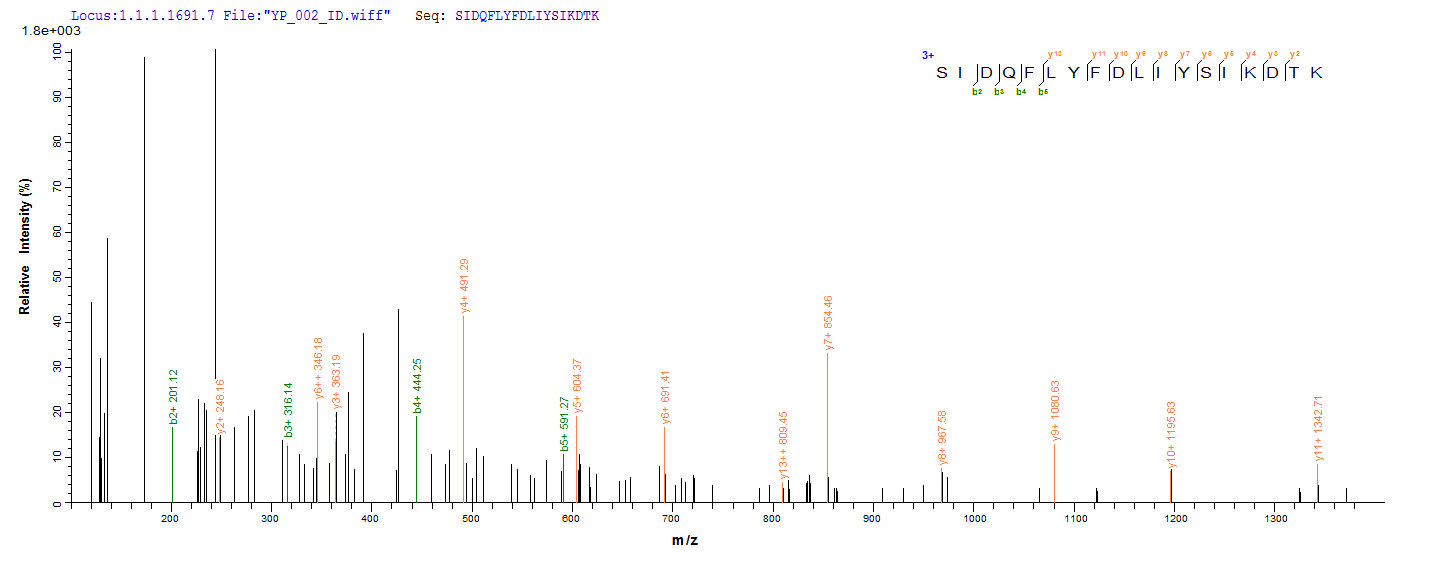Recombinant Staphylococcus aureus Enterotoxin type B (entB) is produced using an E.coli expression system and covers the complete mature protein sequence from amino acids 28 to 266. The protein comes with an N-terminal GST tag attached to help with purification and detection processes. SDS-PAGE analysis shows the purity exceeds 90%, which appears to make it suitable for different research purposes.
Staphylococcus aureus Enterotoxin type B (entB) is a powerful exotoxin that plays a key role in how this bacterium causes disease. It works as a superantigen, causing widespread T-cell activation and triggering the release of cytokines. This protein has become important for researchers studying immune responses, how microbes cause disease, and developing new treatments. Learning how entB works may help advance therapies for diseases caused by bacterial toxins.
Potential Applications
Note: The applications listed below are based on what we know about this protein's biological functions, published research, and experience from experts in the field. However, we haven't fully tested all of these applications ourselves yet. We'd recommend running some preliminary tests first to make sure they work for your specific research goals.
The Staphylococcus aureus entB is a superantigen that requires precise tertiary structure formation, including specific disulfide bonds, for its biological activity (e.g., MHC class II binding and T-cell activation). While the GST tag may enhance solubility, its large size (≈26 kDa) may sterically hinder proper folding of the enterotoxin domain (≈28 kDa). E. coli can express soluble proteins but may not replicate the exact folding environment needed for this bacterial toxin. Without experimental validation, the protein cannot be assumed to be correctly folded or bioactive. The high purity indicates low impurities, but does not guarantee native conformation.
1. Antibody Development and Validation Studies
This application is generally suitable. The recombinant entB can serve as an immunogen for antibody production, as antibodies often recognize linear epitopes. The GST tag facilitates purification. However, antibodies generated may not recognize conformational epitopes of the native, properly folded enterotoxin B. Validate antibody specificity against native enterotoxin B (e.g., from S. aureus culture supernatant) for reliable detection.
2. GST Pull-Down Assays for Protein-Protein Interactions
Use with caution. While the GST tag enables pull-down assays, misfolding may alter physiological interactions (e.g., with MHC class II or T-cell receptors). The tag itself may cause non-specific binding. Any identified interactions must be validated using tag-free, native enterotoxin B to ensure biological relevance. Consider cleaving the GST tag before assays.
3. Biochemical Characterization and Stability Studies
Suitable for basic biophysical analyses (e.g., circular dichroism for secondary structure, dynamic light scattering for aggregation). However, data may not reflect native entB due to the GST tag's influence. For stability studies, focus on the tagged protein's properties rather than extrapolating to the native toxin.
4. ELISA Development and Immunoassay Optimization
Feasible for research assays, but the GST tag may interfere with antigen-antibody binding if epitopes are masked. If developing diagnostic assays, compare sensitivity/specificity with native entB. The high purity supports consistency, but ensures the recombinant protein's reactivity mirrors native toxin behavior when using clinical samples.
Final Recommendation & Action Plan
Before using this recombinant entB for functional studies, validate its folding and activity. First, assess structural integrity via circular dichroism (compare spectrum to native entB if available) and check disulfide bond formation via non-reducing SDS-PAGE. For bioactivity, perform a functional assay (e.g., T-cell proliferation or MHC binding assay). If inactive, consider tag removal (GST cleavage) and re-test. For antibody production, proceed but validate antibodies against the native toxin. Avoid interaction or immunoassay studies without confirming the protein's native-like conformation. For reliable results, express tag-free entB in a suitable system (e.g., E. coli with optimized disulfide bond formation) or use native toxin as a control.








